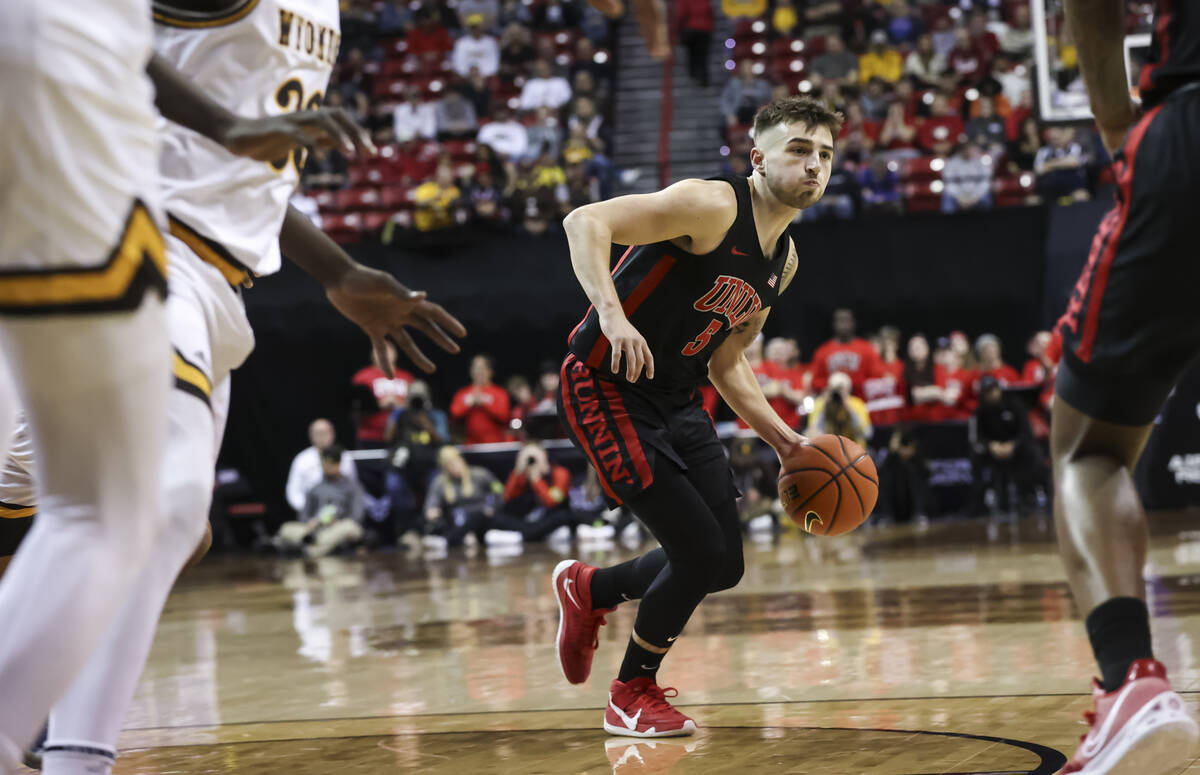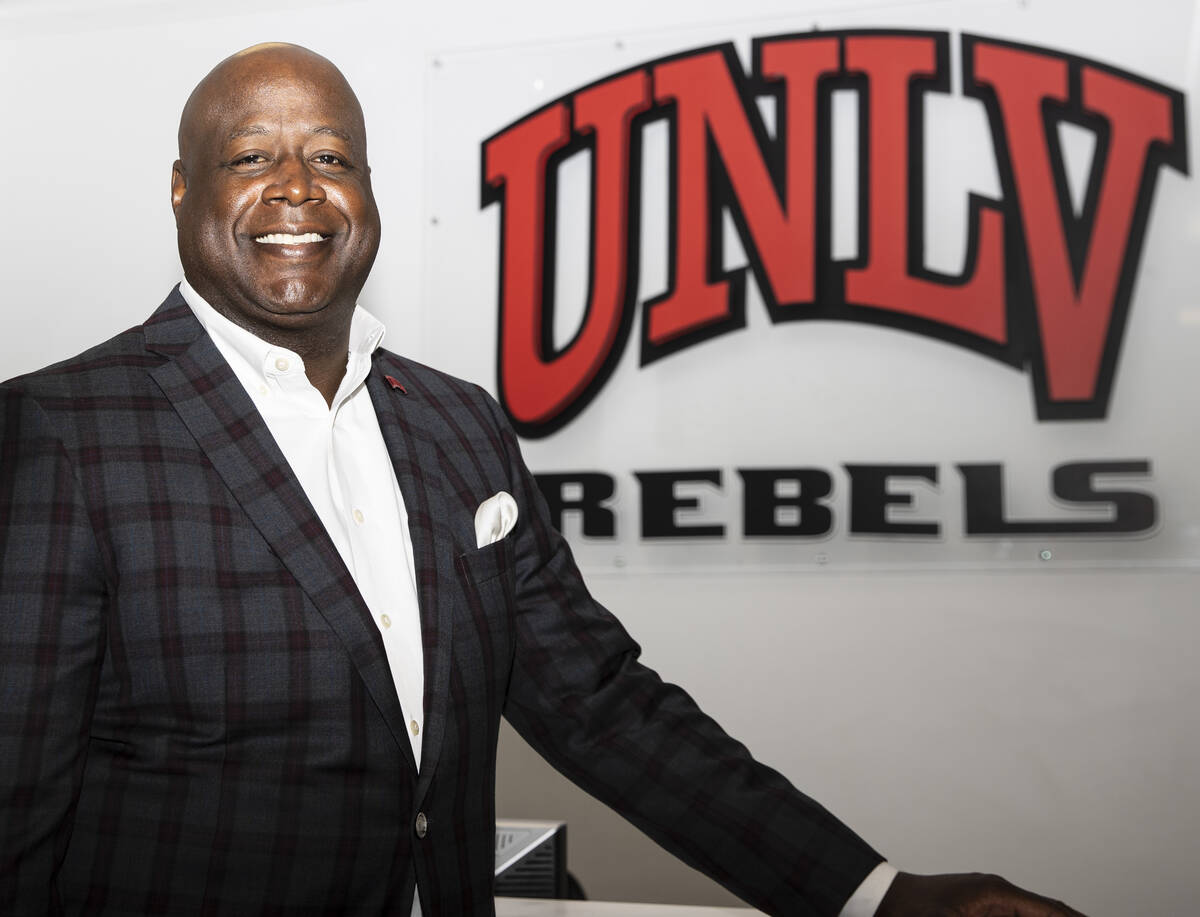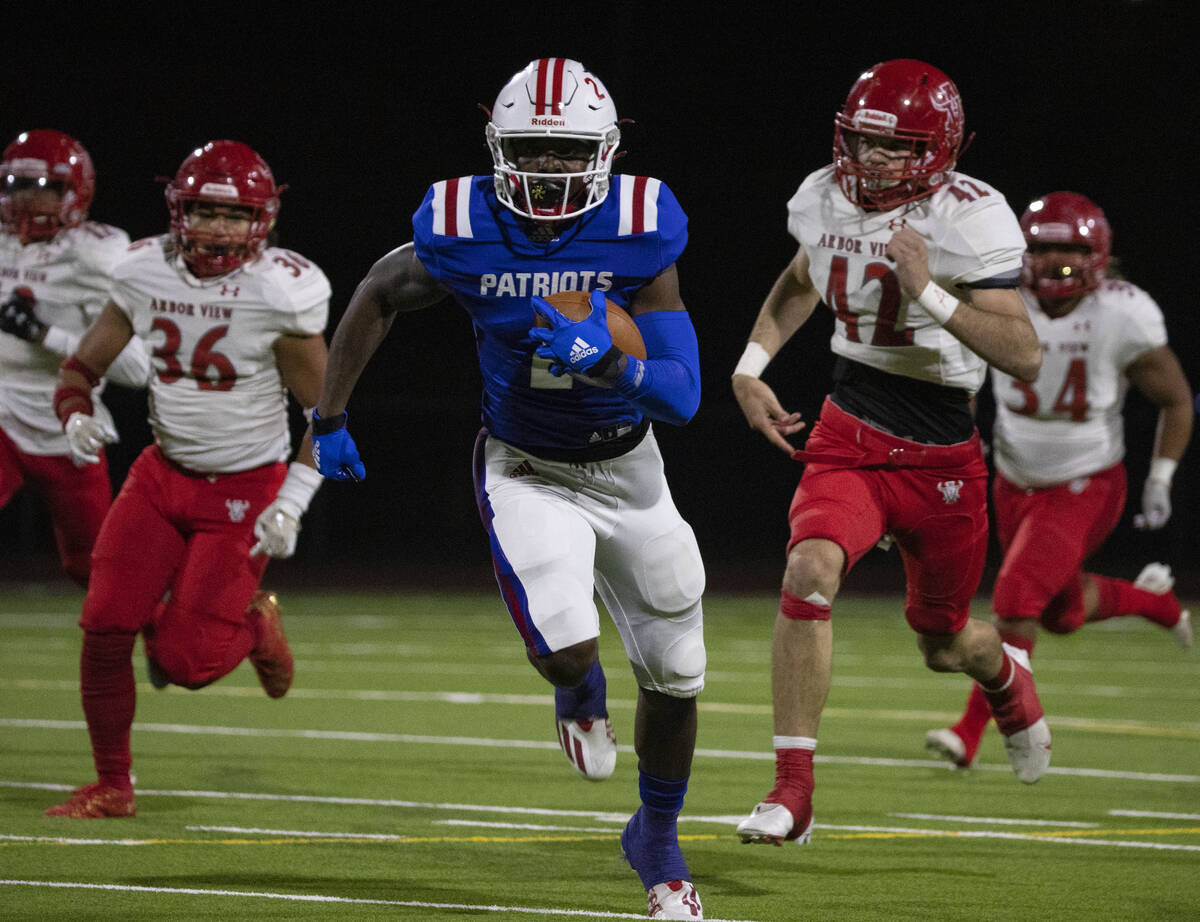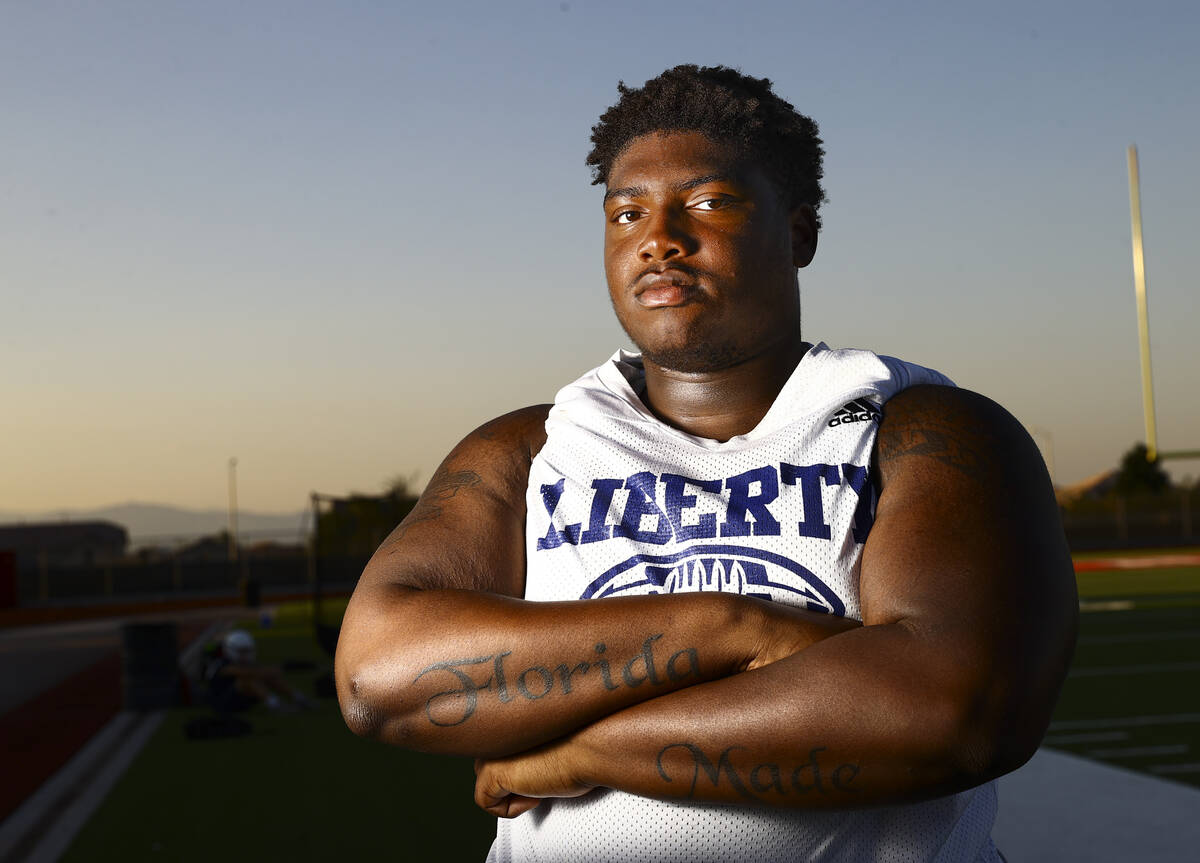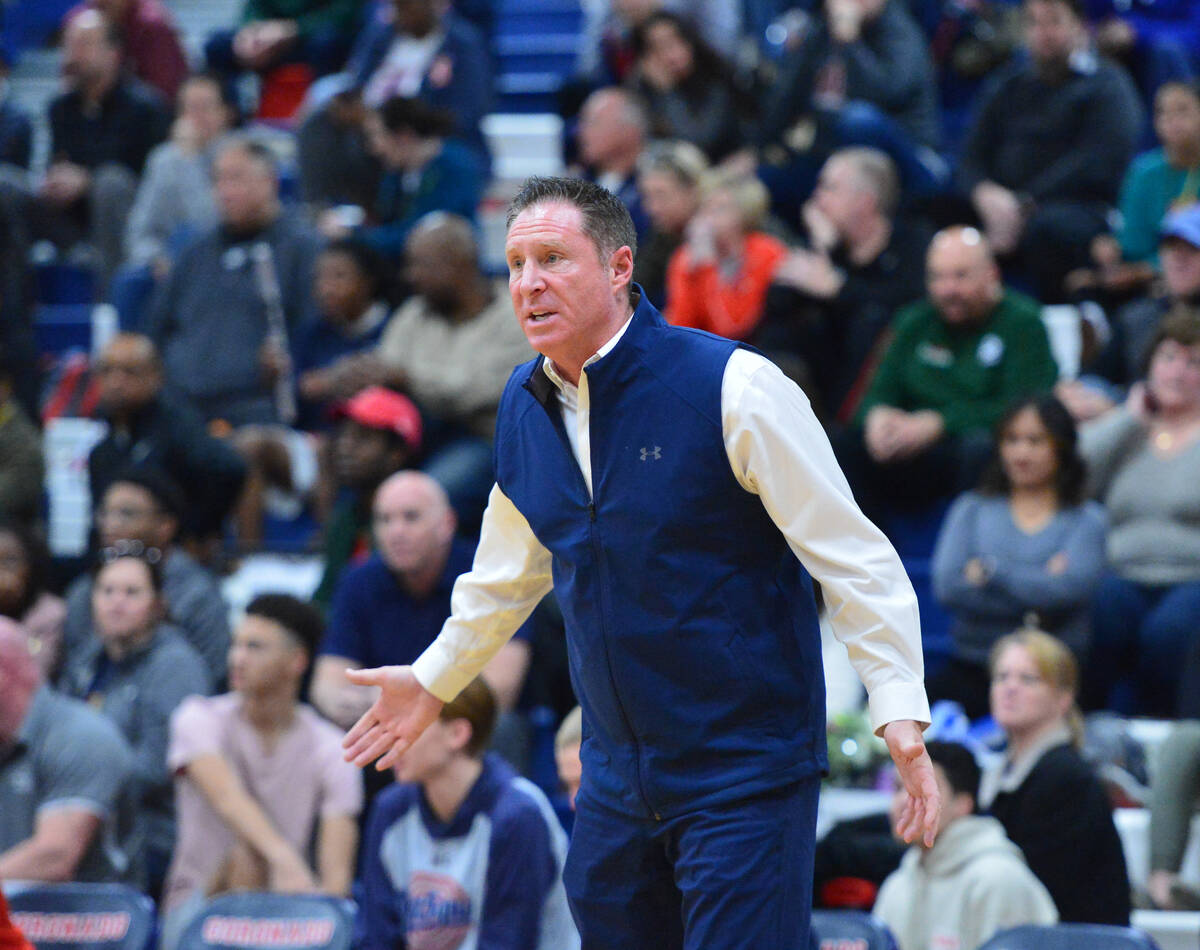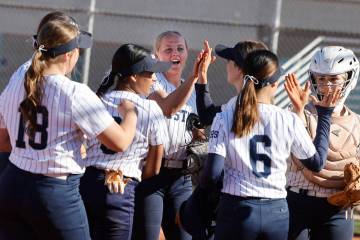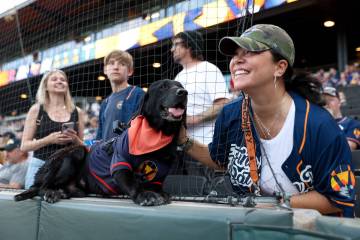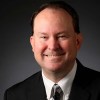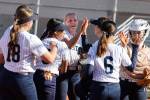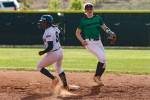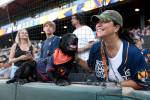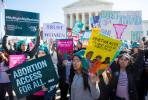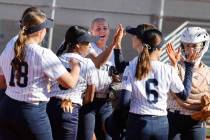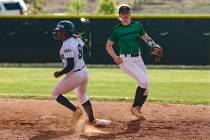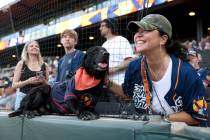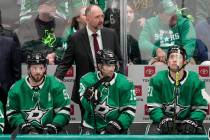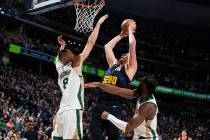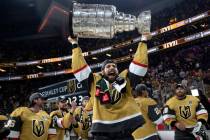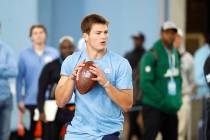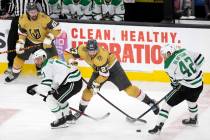UNLV, other schools navigating uncertain NIL rules
UNLV was getting more than just a basketball player when Jordan McCabe transferred from West Virginia last year.
The Rebels were getting a workout instructor, a podcast host and a product endorser.
They were getting someone willing to make nearly full use of the NCAA’s relaxed name, image and likeness rules.
“I’ve never pigeonholed myself as one thing,” McCabe said. “Obviously, basketball is my passion right now, and I love it more than anything. But I didn’t just want to be a basketball player. My grandfather always used to say, ‘If you leave here and all you were was a basketball player, then I think you sold yourself short.’”
Name, image and likeness, or NIL, is changing college athletics, allowing some athletes to land endorsement deals in six and even seven figures.
McCabe makes it clear he’s not one of those athletes. Instead, he represents the vast majority who receive little more than extra walking-around money or products.
Because laws vary state to state and the NCAA has only issued vague guidance, confusion reigns in athletic departments throughout the nation on how to best handle NIL. Some are aggressive and clearing their own paths while others are waiting for more direction.
Some clarity should come in June when the NCAA Division I Council makes recommendations.
“We’ve been kind of given this blanket follow-the-NCAA policy, do what your state tells you to do, create your own institutional policy,” said Eric Nepomuceno, UNLV deputy athletic director and chief operating officer. “As a result, we’re kind of all over the place. But I think that’s the charge. How can we provide structure to all that’s going on right now?”
How NIL got here
Athletes getting paid beyond their scholarship is not new. What’s new is it is now legal in the eyes of the NCAA.
Until NIL, coaches found creative and sometimes unscrupulous ways to make sure their top recruits and athletes — and their families — were compensated.
“If you have XYZ school, if they have a big-time booster, a billionaire, and he’s willing to throw a job at Mom or Dad or slide 50 grand on the side to a big-time recruit, it was happening,” Liberty High football coach Rich Muraco said. “I think the NCAA probably realized that. They couldn’t regulate it, so why not go to this model?”
The NCAA, however, didn’t go willingly.
It fought to preserve the status quo, but found the battle more daunting after losing several high-profile court cases. One involved Henderson resident Ed O’Bannon, the former UCLA basketball star who was upset after seeing his image in an NCAA basketball video game, even though he wasn’t asked for permission to use it and wasn’t paid for it.
States also began to take their own actions by passing laws making it legal for athletes to receive compensation. Nevada passed its own version last May.
The mixture of different laws has put pressure on the NCAA to develop a more detailed national NIL policy than the one that went into effect July 1.
The NCAA Division I Board of Directors told the NCAA Council in February to take up the issue, with an early report due in April and recommendations due in June that can be put into action.
Many observers believe the NCAA would prefer that Congress step in and create national standards, but that Washington politicians aren’t prepared to do so. However, some Democratic senators and representatives, ESPN reported, will conduct an NIL summit on Wednesday to try to create momentum for NCAA reform.
“The structure is not really defined well enough yet,” Coronado High boys basketball coach Jeff Kaufman said. “Where does the structure come from? I don’t believe it’s going to come from the NCAA. Is it going to come from school compliance offices? I don’t know. I guess that’s the next step, so who’s going to do that? Hopefully, it’s the college coaches that come up with a structure. I think they will.”
Striking it big
Headlines have gone to athletes such as Alabama quarterback and Heisman Trophy winner Bryce Young, who according to college sports database website On3 has received $1.9 million in endorsement money. LeBron James’ son, high school basketball prospect Bronny James, is No. 1 at $6.3 million.
Big money also has gone to female athletes, such as Connecticut basketball player Paige Bueckers, who late last year signed a multiyear deal with Gatorade. The Cavinder twins, Fresno State women’s basketball players who recently entered the NCAA transfer portal, have reportedly made about $1 million.
These athletes, however, are the outliers.
Former Liberty High wide receiver Germie Bernard, now a freshman at Michigan State, said he receives $500 a month from a Michigan mortgage company. He hopes that deal is just a start.
“My name can be really big out here,” Bernard said. “If I’m able to make plays on the field, I know that I’ll get a lot of other deals from a lot of people that will want to invest in me.”
Nepomuceno said UNLV athletes have about 100 NIL deals, with most predictably in revenue sports football and men’s basketball. But women’s golf also receives a lot of attention, though many golfers receive products such a clothing and balls rather than money.
UNLV women’s golf coach Amy Bush-Herzer said only American players on her roster can receive endorsement deals. International athletes are there on student visas, which don’t permit them to work because of tax reasons.
All UNLV athletes are not allowed to represent industries such as gambling and marijuana dispensaries that are prohibited by the NCAA.
Because it doesn’t want to appear to endorse any of the products endorsed by its athletes, UNLV has not released a list of athletes and the brands they back.
Other schools take a different approach. Ohio State, for example, announced in January that its athletes had received nearly $3 million in NIL money and the following month even broke down the dollar amounts by sport.
The Brigham Young and Miami football programs reached endorsement deals for their teams, which the NCAA is reportedly investigating to determine if the agreements violate current rules.
UNLV’s more conservative approach to publicizing its athletes’ deals could hurt the athletic program in recruiting, but the university decided to remain in the NCAA’s good graces rather than risk an investigation.
As far as NIL’s effect on recruiting, UNLV athletic director Erick Harper said, “Obviously, you see the big stories around the country with this guy getting a million dollars for this or that. Is it an effect? Yeah, I’m sure it is, but it’s too early to truly know how much it’s going to affect.”
Top of mind for recruits
The biggest effect NIL will have is on recruiting and the transfer market. Kaufman said college coaches already have made NIL part of their pitch on each recruiting trip he has taken with one of his players.
“It’s usually the first question parents are asking now,” Kaufman said. “What does the NIL look like? How much money can they make? … In my opinion, the good coaches and the good schools, they are selling their school and their program first and foremost. The NIL comes second. But in a lot of pitches, NIL comes first.”
Local high school athletes said they were still trying to figure out the NIL and their options, but expressed an interest in maximizing the opportunities they receive.
McDonald’s All-American Aaliyah Gayles, a Spring Valley basketball player who has committed to Southern California, called NIL “another big step” once she arrives on campus.
“I feel like NIL will be big,” said former Liberty defensive tackle Sir Mells, who signed with Oregon. “You see some of these kids making thousands of dollars in some of these programs. In my program, we have Nike in our backyard, so that’s a huge NIL deal there just waiting.”
The recruiting effect isn’t just at the four-year level. Junior colleges can use NIL to attract top players, too, including at College of Southern Nevada.
One advantage CSN has over a four-year school is top baseball players can leave for the major league draft after a year or two. Those who sign with UNLV must stay at least three years.
Attractive NIL deals would further help CSN recruit those types of players.
“The pendulum in my career I’ve seen swing from 100 percent amateurism, so to speak, to what we have now,” CSN athletic director Dexter Irvin said. “It will settle somewhere that makes sense for student-athletes and makes sense for institutions, I hope. But the short answer is yes, I think there are going to be opportunities for our students at CSN.”
Where NIL goes from here
At some point, there will be more clarity regarding how each school handles NIL.
It could come in the form of a breakaway once new Division I standards are developed under the revamped NCAA that provides more power to the conferences. The big programs could establish their own rules and leave the rest to figure it out for themselves.
The NCAA also could establish a blanket policy that everyone agrees to, including the top powers. And there’s always the possibility that Congress steps in off the sidelines.
Blake Lawrence is CEO of Opendorse, which helps athletes navigate the endorsement process. He said in a webinar that athletic departments are severely unprepared to handle NIL under current conditions.
As a case in point, Lawrence said the National Basketball Players Association has more than 100 employees aid 450 NBA players with endorsements. A typical college athletic department, he said, has one person responsible for about 500 athletes.
“We’ve seen a lot that would indicate that this is a billion-dollar-a-year type industry,” Lawrence said. “… Student-athletes are now thrust into a position where they’ve got to handle a lot more than they ever have.”
In UNLV’s case, Nepomuceno estimated NIL takes up 60 to 70 percent of his time.
He and Irvin also serve on a committee created by the state to come up with suggestions on how best to handle NIL.
“You now understand this is now a player in the athletics landscape,” Nepomuceno said. “You just hope that it’s going to be used for its original intent, which is to enhance and benefit the student-athlete experience as opposed to creating a disparity within recruiting.
“That’s always the fear. How hard is it going to be to keep up? Well, I think what you’re going to see is again a divide. There are going to be the institutions that have capacity and have resources and those that don’t.”
Review-Journal sports reporter Andy Yamashita contributed to this report.
Contact reporter Mark Anderson at manderson@reviewjournal.com. Follow @markanderson65 on Twitter.
Adidas jumps into NIL
Adidas announced on Wednesday a name, image and likeness network for the more than 50,000 athletes at the 109-affiliated schools that could become a game-changer and prompt other shoe and apparel companies to take similar steps.
The program allows athletes to be brand ambassadors. The rollout will start with historically black colleges and universities and Power 5 schools in the fall.
The eligible athletes would have the opportunity to earn a percentage of the sales they drive at adidas.com or the adidas app, as well as be paid per social media post.
UNLV has a contract with Nike.



